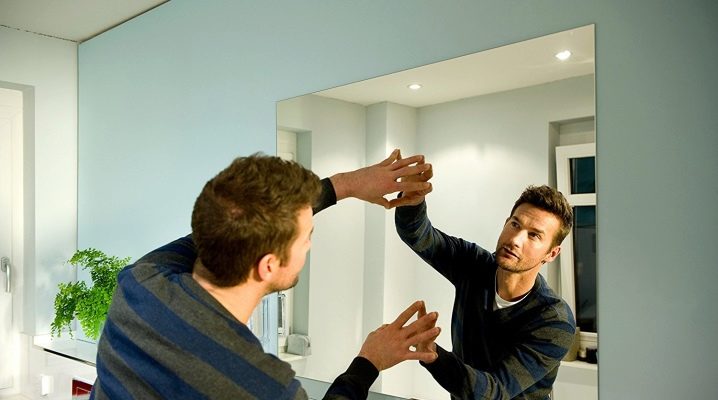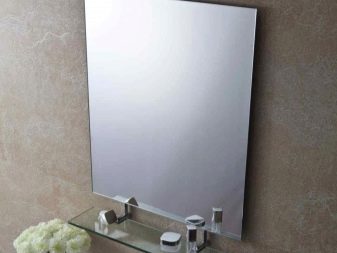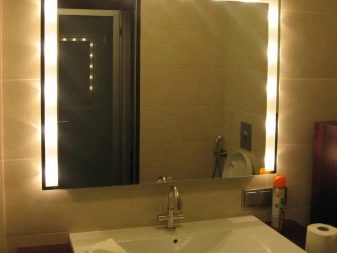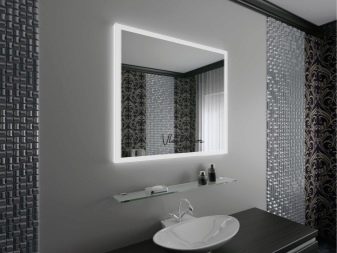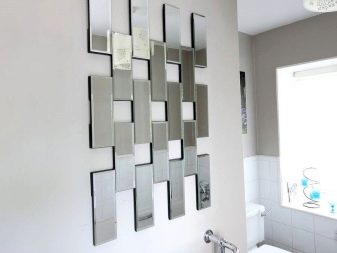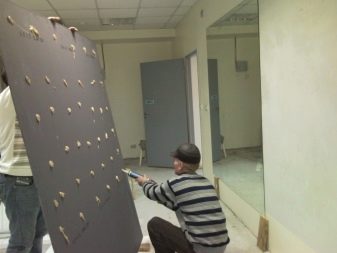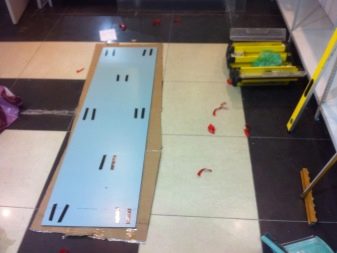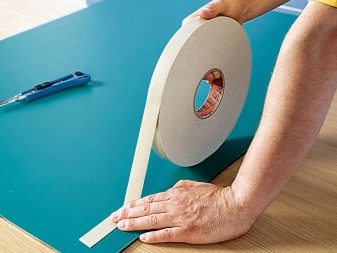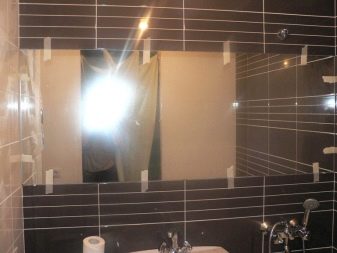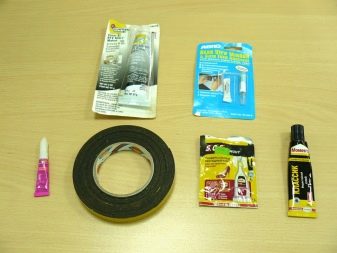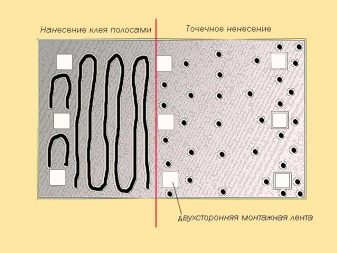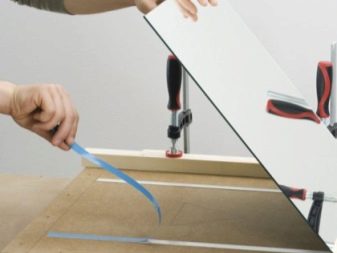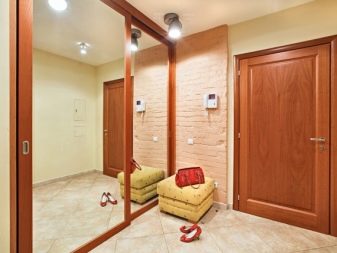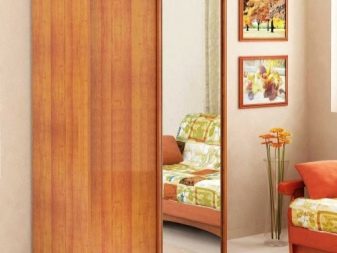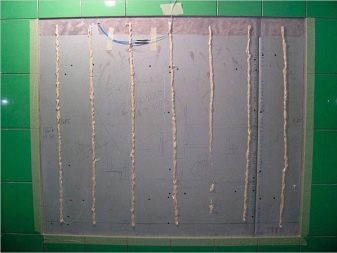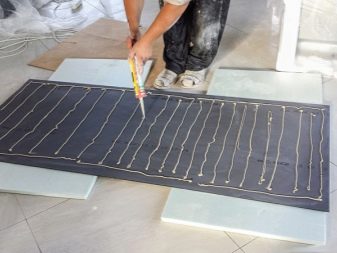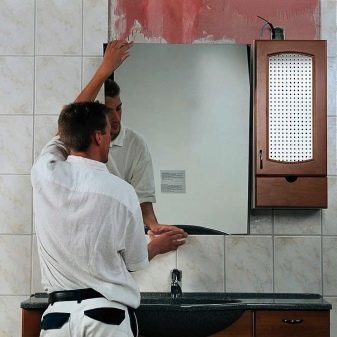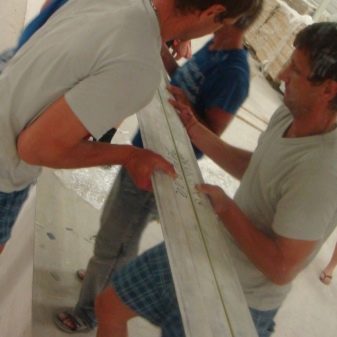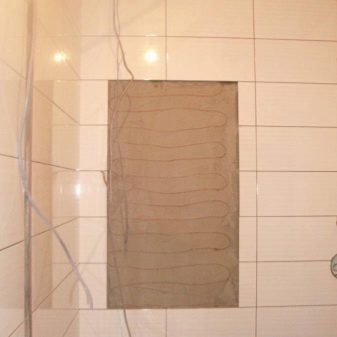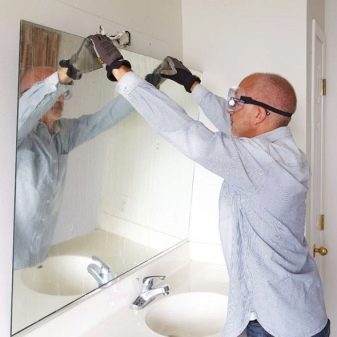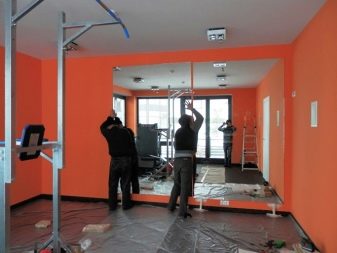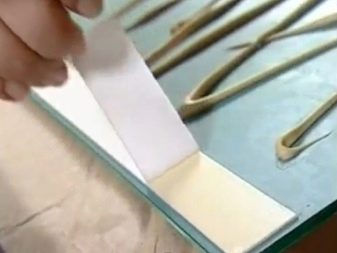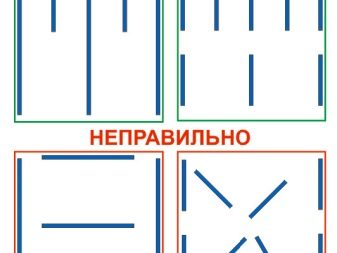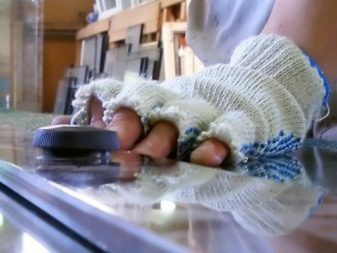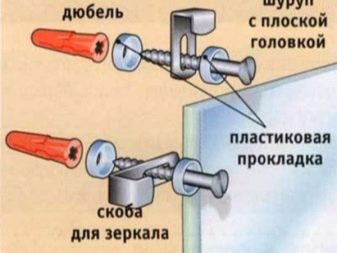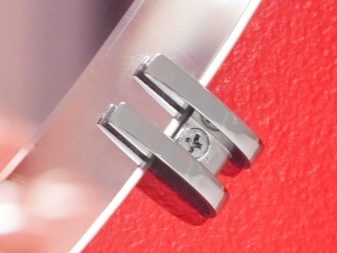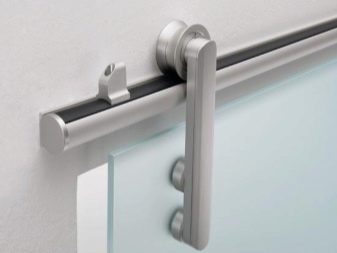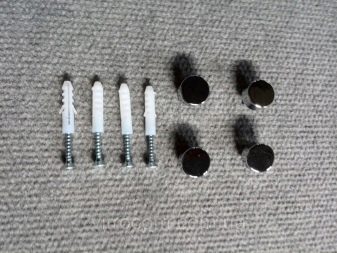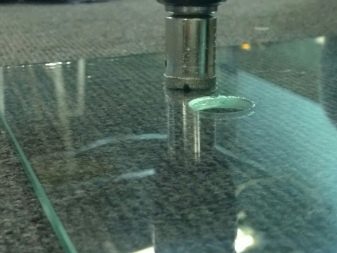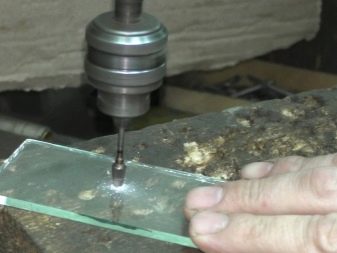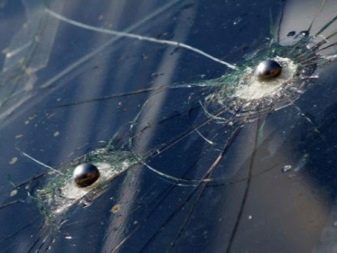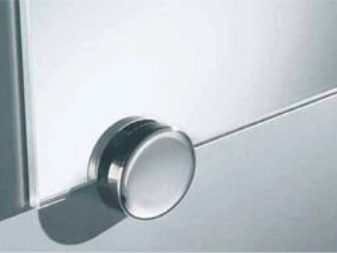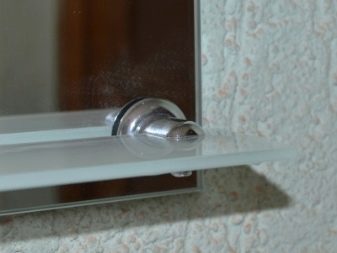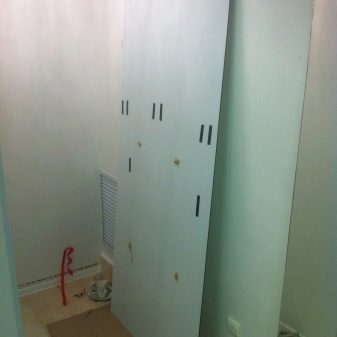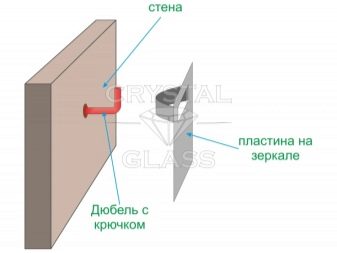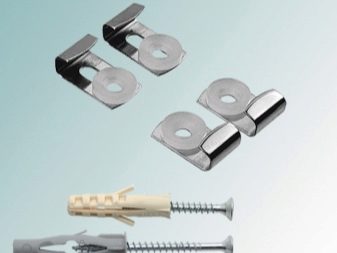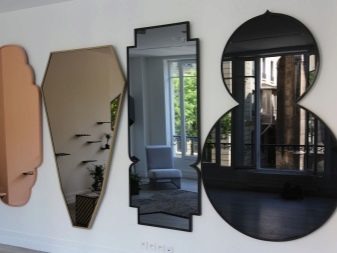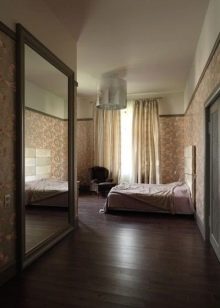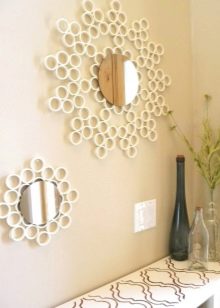Fixing the mirror to the wall: installation methods
Glass is a very capricious material to use. But at the same time, it turns out to be very popular in interior design. In particular, in the form of a product such as a mirror.
It is difficult to overestimate the wide opportunities that provide mirrors to people, besides their direct purpose - to reflect us. They contribute to the visual expansion of the space, help to establish a special "diffused" light in the rooms, and so on. Therefore, it is very important to understand how to properly place the mirror on the selected surface.
Special features
Before proceeding to the methods of mounting the mirrors with our own hands, we will dwell a bit on the peculiarities of the surface on which they are supposed to be attached.
- Concrete - the most common material in most building structures. To work on concrete, you will need a hammer drill, and before gluing anything onto a concrete wall, it must be primed.
- Drywall - The material is not very durable and can not withstand heavy loads or repair. Therefore, you must carefully monitor the weight of the product: the weight of the mirror cloth should not be more than 20 kg, and you will also need special fittings.
On average, the weight of 1 square meter of a mirror, depending on its thickness, is from 7 to 15 kg. This should be taken into account when choosing the method of fastening and the type of fittings.
How and what to attach?
Hidden fasteners require some effort. In this case, you can do without nails and do not spoil the wall. It is best to glue the product onto a plasterboard surface. Nails can be used for brick walls.
So, the mirror can be glued or hung.
To glue
Sticker mirror panels - quite an easy process. You can paste it in several ways.
The advantage of this group of methods will be the absence of visible fixings on the surface of the mirror,the possibility of using the product without a frame, the possibility of interior design with the help of small figured models in the form of butterflies, flowers, polygons and others.
Gluing is a relatively simple way, great for small items.
At the same time, this method of strengthening the mirror in its various applications will have three serious drawbacks:
- In many cases, the glued product cannot be removed from the wall - it will have to be broken.
- The surface on which you intend to place your mirror should be flat and stable. And if the first is easy to verify, then it is quite difficult to predict that a wall (especially just erected or re-plastered) will not shrink, which will lead to the destruction of the product.
- It is possible to glue far from all surfaces and not in all rooms. It will not hold, for example, on a tile, and changes in temperature and humidity in the bathroom or in the kitchen can eventually destroy the adhesive layer.
For work, you need to use a special mirror glue - it does not contain acids that could spoil the amalgam.Before using another adhesive, the back side of the product should be treated with a sealant. Neutral silicone sealant can be used instead of glue.
When gluing the product in the bathroom, it is worth using a special silicone sealant for aquariums, which is slightly more expensive than usual, but contains antifungal additives in its composition and was originally intended for use in a wet environment.
Prepare, level and degrease the surface. If you glue the product onto a vertical surface, be sure to prepare supports that will help hold the canvas in place before the glue hardens. In this capacity, you can use boards or several screws temporarily screwed along the bottom edge of the marking, so that the mirror canvas rests on them.
Also, the adhesive can be combined with several strips of mounting tape, which will serve the same purpose and additionally secure the web before the glue hardens.
If you want to glue the fabric to the front door or cabinet door, it is better to arrange them horizontally, removing from the hinges - it is more convenient.You will not need to use props, and the mirror sheet will not move exactly until the glue has completely hardened.
You can not stick the canvas on the wallpaper - guarantees that they, in turn, hold on the wall, no. Therefore, the wall must be cleaned of wallpaper, other unstable coatings and primed.
Apply the adhesive stripes, leaving between them a gap of 8-12 centimeters, depending on the size of the canvas. Glue can also be applied "snake" in staggered or dotted across the back of your mirror. Try to avoid the edge - glue may run out untidy, and it will subsequently be difficult to remove it from the wall.
Be sure to put the markup on the wall where you intend to glue the mirror, it will help you navigate. Use a level to check if it is flat.
Attach the mirror to the wall, focusing on the markup. Be careful: the glue hardens quickly, and you may not have time to correct the position if you put the mirror in the wrong way. Hold the mirror for several minutes, pressing it tightly, then substitute the supports - they can be removed in a day or two.
It is impossible to glue the mirror onto the tile: therefore, usually when installing the tile in the bathroom, a free section of the wall in advance is left to fit the size of the future mirror. If you have not done so, you will have to remove the tile or choose another way to attach the mirror to the wall. To compensate for the height difference, if the thickness turned out to be different at the tile and at the mirror (most often, the mirror is thinner), an additional layer of plaster is applied under the product, or a sheet of waterproof gypsum board is installed between it and the wall. Joints can be treated with glue or sanitary sealant.
If the canvas is large, then you need to take extra precautions. So, the surface of the wall under it should be very well aligned, and a special film should be stuck on the surface of the mirror: now, if it breaks, it will not be fraught with serious injuries.
Mirror walls of several large canvases are mounted with a small gap between the canvases so that the mirrors do not break during installation or with slight shrinkage of the walls during use.
Small mirrors can be glued without glue, only using double-sided mounting tape.The advantage of this method is that the foam base of the tape to some extent compensates for both the unevenness of the surface under the mirror and its possible movements. This method of gluing, in addition, allows the dismantling of the mirror.
But the mounting tape must be wide, of high quality and designed to withstand heavy loads. The amalgam of the mirror must withstand the same load: for some cheap models, it may begin to peel off during operation, and there is a risk of damaging it during installation. These mirrors are generally not recommended to glue.
Just as before using the glue, you first need to prepare the surface - clean the dust and wipe with alcohol for degreasing. The adhesive tape is glued to the surface evenly, but it should not be placed around the perimeter or stripes horizontally - the pieces of adhesive tape are placed vertically in a checkerboard pattern. Closer to the upper edge of the mirror, you can add a few extra strips.
Hang
If the mirror is without a frame, then you can use various types of fittings presented in stores: brackets, profiles, brackets, clamps and strips.With the help of them, the mirror can be mounted both close to the wall, and placed with the removal - with an interval from 5 mm to several centimeters between it and the wall. This can be useful if the surface under the mirror is uneven and cannot be leveled.
There are two types of fasteners for mirrors: through and non-through.
A through-mounting method involves mounting with dowels through holes made directly in the mirror. If your mirror is already supplied with special holes, or the store provides glass drilling service, you just have to install the dowels in the wall and fasten the mirror.
Usually the dowel for fixing mirrors (and not only) consists of:
- Sleeves made of hard plastic, placed in the wall, expanding and well-fixed in the wall when screwing in the screw.
- Screw
- Special clamping pads that fit between the glass and the wall, the glass and the screw head, and do not allow the mirror to be damaged when tightened.
- Decorative caps that are made of metal or plastic and hide the heads of the bolts.
Hanging the canvas with the help of dowels on the ceramic tile, wall, covered with wood or pasted over with PVC panels,Be sure to note that fixing for the tile is not enough - you need to go deeper into the base wall, for which longer dowels are used, or it is better to clear the wall of the covering in the place where you plan to mount the mirror.
If the type of surface allows you to directly screw into it a screw (wooden furniture), then you can do without the sleeve under the dowel.
If the wall is fragile (chipboard, drywall), use special dowels.
If there are no ready-made holes in the product, but the fit-through installation method suits you, and you want to make them yourself, you will need a special diamond drill on glass, a low-speed drill and a little patience. Before drilling, fix the canvas on a flat, preferably wooden, surface so that it does not move, degrease the surface with alcohol and mark the places where you will drill the holes with a marker.
The product may crack from heating during the drilling process. In order to avoid this, you will have to work at low speed - from 250 to 1000 revolutions of the drill per minute. In order to prevent the sheet that has heated up during the drilling process from cracking, mold around the “cup” of clay and mark it with water or turpentine.The liquid will cool the glass and retard the glass dust generated during operation.
If you want to mount the product with non-through fasteners, then the algorithm for installing all types of such fasteners is about the same. The larger and heavier the canvas, the more mounts will have to use.
Pay special attention to the lower fastener - it must withstand the greatest load.
Usually fixing elements are installed from below - at a distance of 2-3 centimeters from the supposed angle of the mirror. And on the sides, so that the mirror kept in this “pocket” under its own weight. It is possible to install fittings in which fasteners are installed at the top and bottom, and the mirror is “embedded” at the side.
The lower elements are installed strictly horizontally on the marking, the side elements are usually so that the mirror on one side passes freely into their grooves. Usually it is 2-3 mm from the expected side edge of the mirror, but the distance depends on the specific, selected type and style of fittings. Be sure to check that the mirror could not fall out with a maximum shift to one side.
Sometimes, for reliability, a decorative profile is used as the bottom element of the furniture,which can be combined with any other method of attaching the top edge - using staples or through dowels.
If you want to add extra durability to the mirror canvas, you can stick it onto a sheet of plywood or chipboard: such a measure not only prevents the mirror from breaking just by careless pressure, but also makes it thicker, separately consider this during installation.
When hanging a mirror, stick adhesive strips to its corners on the back side: they are sold in stores, they are often glued, for example, on furniture legs. With this precaution, the mirror will not “hang out” in the mounts.
If you install a mirror in the bathroom or in the kitchen, treat the back side and glass ends with sanitary sealant.
Mirrors taken to the frame are often supplied by the manufacturer with rings or loops, all you have to do is to mount a suitable mate on the wall, for example, hooks. You can also purchase hinges or hanging plates from the store.
A mirror in a heavy wooden frame without ready-made fastenings can be mounted on the wall beyond the top edge using two slats with a cross section of approximately 50 by 20 mm, with longitudinal cuts at a 45-degree angle, which interlock in a “lock”.
One of them is mounted horizontally on the wall, the other - to the back side of the frame at a height of about 4/5 of the mirror (at some distance from the top edge). The mirror will be held in the "lock" under its own weight.
When installing wall models, be sure to consider the features of the room. So, in the nursery, even on small mirrors, it is worth sticking a splinter film to avoid injuries.
In small and dark rooms, install a mirror on a wall perpendicular to the window. Horizontally positioned mirrors visually expand the room, and vertical ones do it higher. Before you mount a mirror, be sure to verify that it will reflect.
Beautiful examples and options in the interior
In the corridor fit composition of several mirrors.
The bedroom is decorated in sober colors.
In the living room you can give a wild fantasy and show your design abilities.
How to hang a mirror, see the following video.
